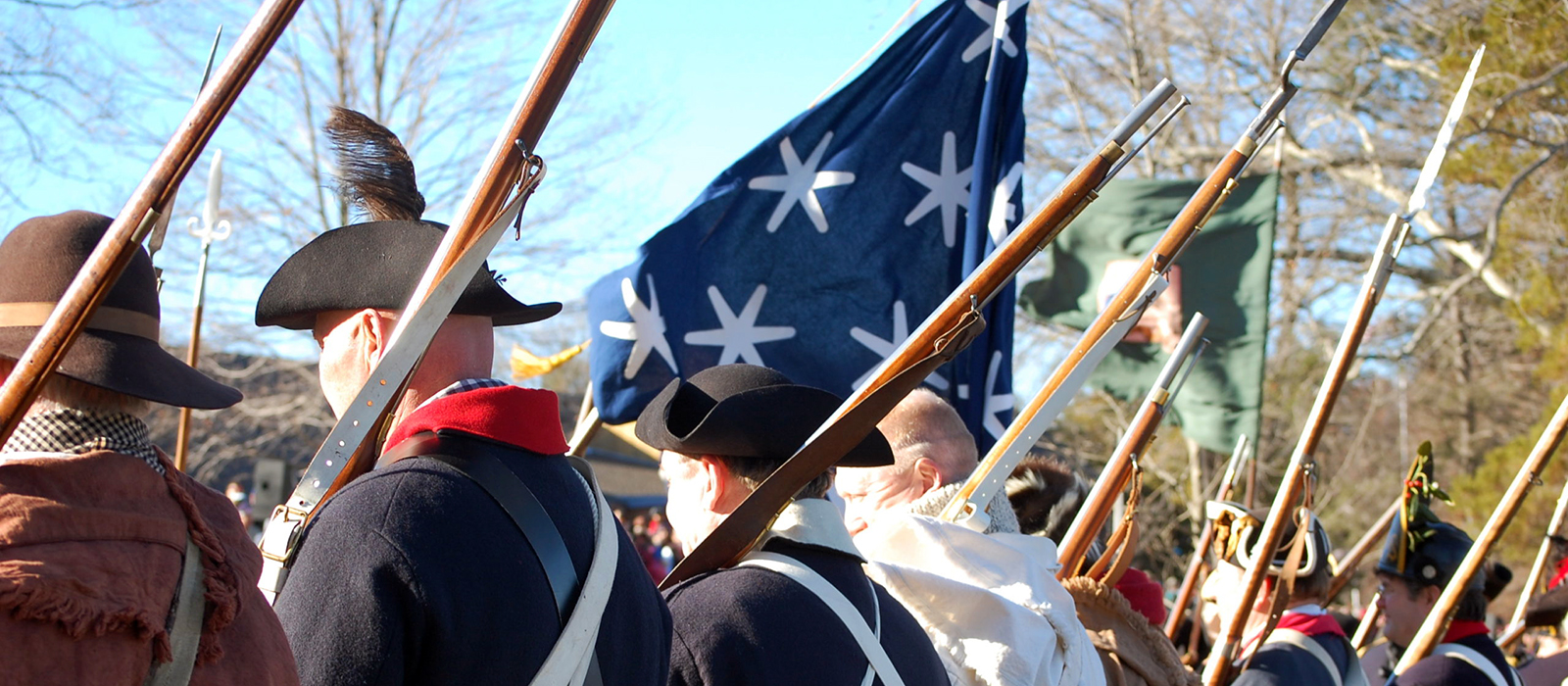
The period surrounding the crossing has come to be known as the Ten Crucial Days. Those battles, and the maneuvering around them, affected the Continental Army in ways both profound and practical.
A Renewed Spirit
“The most obvious lesson [the Continental Army] learned was that it could in fact defeat the enemy in combat and that the war could go on; it wasn’t a lost cause,” says William “Larry” Kidder, a Revolutionary War historian and author. “The Battle of Trenton was proof enough of that, but that fact became especially clear at the Battle of Princeton, where the Continental soldiers faced the Redcoats face-to-face on the battlefield and emerged victorious.”
Confidence spread among the soldiers and officers, some of whom had quietly begun to question General George Washington’s ability as a leader over the weeks before the campaign. But after the series of battlefield victories and his bravery at the Battle of Princeton, where he rode out between the two armies and was shot at from every angle, all doubt was erased.
Bayonets and Artillery
On the practical side, a few things became clearer to Washington and his men.
First, bayonets were critical. “The inclement weather in Trenton rendered muskets basically useless,” Kidder says. “The trouble was, only one in five Continental soldiers had bayonets on their muskets in that battle.”
The Battle of Princeton was almost lost as soon as it began when the British overwhelmed General Hugh Mercer’s troops with a bayonet charge. Reinforcements helped stabilize things and set up a Washington-led attack on the left flank that forced the British to retreat. Key to the regrouping was the Continental Army’s artillery, which was valued all the more after the Ten Crucial Days.
For the first Battle of Trenton, Washington crossed the Delaware with 18 pieces of artillery to counter the Hessians’ six pieces, according to Kidder. “The two sides had comparable amounts of artillery at the Battle of Princeton, but the British soldiers later commented on the quality of the Americans’ artillery fire,” he says.
Militiamen
The men firing the artillery for the Continental Army and fighting on its behalf in the battles came into a new light as well. The enlistments of many of the army’s Continental soldiers expired on December 31, several days into the campaign, and only about half agreed to continue to fight, Kidder says.
A movement was already underway to build a more professional army stocked with soldiers on three-year enlistments. The Ten Crucial Days would help that cause, but in the meantime, Washington turned to militiamen to fill the gaps. “Up to that point, they played a questionable and often criticized role in the war,” Kidder says.
But for the crossing and throughout the campaign, Washington used militiamen in a variety of ways, such as local guides and informants. By the Battle of Princeton on January 3, 1777, the final day of the campaign, militiamen comprised a significant portion of his force.
“It was actually the Pennsylvania militias’ artillery that the British had noted,” Kidder adds. “The local militias were heavily involved during The Ten Crucial Days. I think Washington finally realized that militiamen could do more than just fight alongside the Continental Army in battle. War, after all, is about more than the major battles.”

